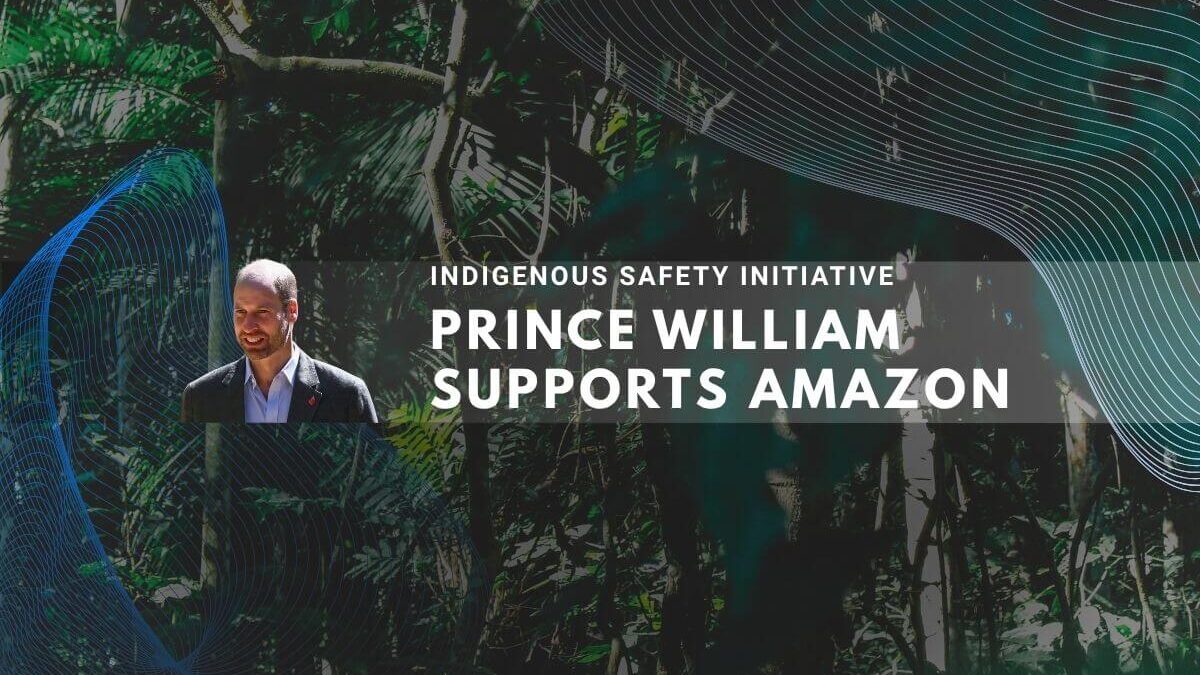Prince William announced a major partnership on November 4, 2025, at the United for Wildlife Global Summit in Rio de Janeiro to protect Indigenous peoples defending the Brazilian Amazon. The initiative directly addresses escalating violence against environmental protectors and accelerating deforestation driven by illegal activities.[1][2][3][4]
Immediate Threat Facing Amazon Defenders Today
Environmental defenders in Latin America face lethal risks. In 2024, the region recorded devastating casualties:[2][5][6]
- 120 environmental protectors killed or disappeared across Latin America
- Over 80 percent of all global environmental defender deaths occurred this region
- 393 documented cases of violence against environmental defenders in Brazil 2023-2024
- Indigenous and Afro-descendant communities experience disproportionate rates of violence
Prince William stated: “We cannot manage our forests while their protectors live in fear. We must protect the protectors.”[3][7][1][2]
What the Partnership Will Deliver Across Nine States
The Royal Foundation established coordinated response with four partner organizations operating across nine Brazilian Amazon states:[1][2]
Immediate Protection Services
- Emergency evacuation assistance for defenders at immediate risk
- Secure communications infrastructure for threatened protectors
- Safe houses for individuals fleeing violence
- Humanitarian aid for families displaced by threats
Long-Term Support Mechanisms
- Legal defense assistance and court representation
- Emergency response fund for urgent situations
- Shared data platform to monitor and document threats
- Global awareness campaigns about Indigenous rights and safety
COIAB, the coordinating organization, represents 750,000 Indigenous Peoples across approximately 110 million hectares of Amazon territory.[2][1]
Indigenous Land Protection Proves Most Effective Conservation Strategy
The 2024 Amazon deforestation crisis reached significant levels. In 2024, over 1.7 million hectares of forest were cleared in the broader Amazon region, primarily through illegal logging, unauthorized gold mining, and land-grabbing schemes.[4][8][2]
Indigenous territories demonstrate proven conservation success despite representing only 27 percent of the Brazilian Amazon:[7][1][2]
| Conservation Metric | Indigenous Lands | Unprotected Areas | Effectiveness |
|---|---|---|---|
| Deforestation Rate | Up to 83% lower | Baseline (100%) | 83% more effective |
| Territory Coverage | 27% of Brazilian Amazon | 73% of region | — |
This data demonstrates that Indigenous stewardship represents the most effective forest protection mechanism available.[9][10][11]
Partner Organizations Bring Specialized Expertise and Resources
The Royal Foundation assembled a consortium because no single organization could address this crisis alone:[3][1][2]
- The Royal Foundation: Provides funding, coordination, and international advocacy platform
- COIAB: Indigenous-led governance and community outreach across 110 million hectares
- Podáali Fund: First Indigenous-led investment fund covering Brazilian Amazon operations
- Rainforest Foundation Norway: Delivers legal aid and international legal support
- Re:wild: Supplies conservation technology and threat monitoring systems
This structure prioritizes Indigenous leadership rather than imposing external solutions.[1][2]
Global Context Highlights Climate and Rights Connection
The United for Wildlife Global Summit represented the fourth annual gathering of international conservation leaders. The November 2025 timing coincides with Brazil’s preparation for COP30, emphasizing the inseparability of Indigenous rights from environmental protection.[12][13][14][15][4][1]
Prince William’s initiative builds on previous Royal Foundation conservation work. The 2024 ranger insurance programme in Africa protected over 6,000 rangers in its first year, with goals to reach 10,000 within five years.[16][17][1]
Data Source and Methodology Transparency for Reader Trust
The 393 documented cases of violence in Brazil between 2023 and 2024 are sourced from official Royal Foundation reporting based on comprehensive documentation efforts. The 120 environmental protectors killed or disappeared in Latin America in 2024 represents confirmed cases recorded across the region.[5][6][18][1]
The 1.7 million hectares figure represents deforestation across the broader Amazon region in 2024. Recent measurement periods through July 2025 show approximately 5,796 square kilometers cleared in the 12-month period ending July 2025, indicating seasonal variations in annual reporting.[19][20][4][2]
The 27 percent figure reflects Indigenous land holdings across the Brazilian Amazon as confirmed in Prince William’s speech and Royal Foundation documentation.[7][2][1]
The initiative represents recognition that forest protection and human rights are inseparable goals. Without safety for the people defending the Amazon, deforestation will accelerate regardless of international climate commitments.
